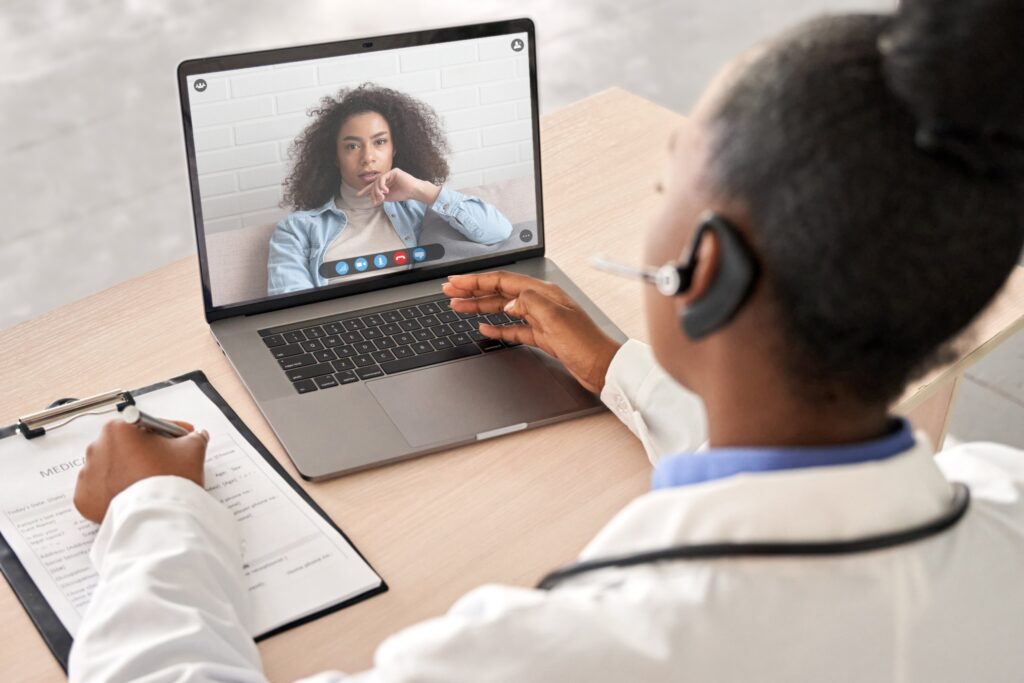Telehealth was rapidly adopted during the pandemic, but as the ability for in-person consults to occur safely increases, there is ongoing debate around the value of telehealth in our future provider suite.
Jon Stambaugh, Senior Vice President – Carrier Practice North America, and Jennifer Cogbill, Vice President of GBCare Advisor Team North America, explore this trend and what it means for insurers.
Q: How did the rise of telehealth happen in 2020?
Jon: At GB, we saw a 15% increase in telehealth-related medical bills in the first 90 days of the pandemic, a trend that has only just started to dovetail as we head out of lockdown and restrictions. Telehealth was seen as a key mechanism to safely address claimant concerns and ensure files could be progress without delay. But, a lack of investment by providers in secure technology has meant it’s been difficult for insurers to see telehealth take a claim from start to resolution.
Jennifer: Telehealth was most effective for triaging patients in workers’ compensation claims, but it has been hard for insurers to utilise it beyond point-of-injury care because of this lack of investment. I believe there is a lot of opportunity for telemedicine in follow-up care, where a provider can monitor a claimant’s recovery and adjust the treatment strategy as required – without the time and cost delays associated with in-person consults.
Q: What are the challenges of telehealth?
Jon: There are still a number of shortcomings with telehealth, such as missing minor signs or symptoms that could change a diagnosis. Even when it’s an on-camera consult, rather than just over the phone, it can be easy for a provider to miss important factors.
Jennifer: To combat this, we’re working with providers to identify how we can best support their assessment process and ensure all possible avenues are followed through with before a diagnosis or treatment plan is implemented. There’s also of course the issue of faulty internet connections or dropped calls, making some employers and insurers reluctant to rely on this technology.
Q: Will telehealth continue to be part of the future provider suite?
Jon: Absolutely. Here at GB, we have seen the significant, positive impact it has had on our partnered insurer’s businesses. Where technology is wholly embraced, it provides an opportunity for insurers and employers to reach younger employees who prefer self-service portals and online appointment scheduling. It’s also a key preventative measure for insurer’s wishing to address their client’s workplace injuries, with the ease of access anytime, anywhere opening up the door for employees to address physical or mental injuries before they impact their day-to-day operations.
Jennifer: There are also plenty of opportunities for technologies such as wearables to increase telehealth use as well. A wearable device amongst a workforce can monitor and predict injuries, as well as assess a patient’s recovery remotely. This proactive approach can reap rewards in reducing the likelihood of costly, complex claims.
Q: How is GB deploying telehealth in its provider suite?
Jennifer: GBCARE sees telehealth as a useful tool for minor injuries or where there is a disruption or lack of medical facilities close by. GBCARE uses telehealth at claim intake to provide a clinical triage to determine whether or not someone needs to seek medical care, or if they could be helped with self-care guidance. We also offer referral to providers who offer telemedicine, if it makes sense based on the injury. We also believe telehealth is well-suited for use in ongoing care to monitor recovery from an injury or minor illness. There is a lot of opportunity for telemedicine in follow-up care but that needs to be promoted by the provider community. It’s all about providing the best medical advice and resources for the injured worker while promoting effective tools that are easy and convenient to improve the injured worker experience. Telehealth is a great addition to those resources.
To find out how Gallagher Bassett can help you address the needs of your claimants, connect with our team today







